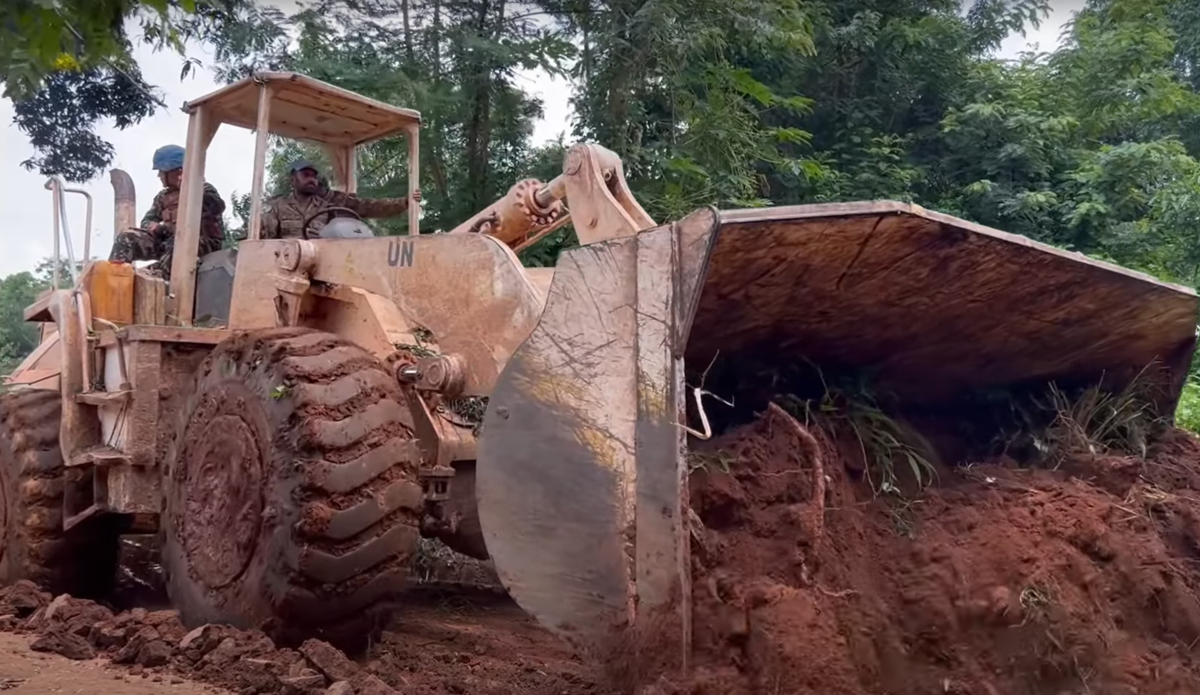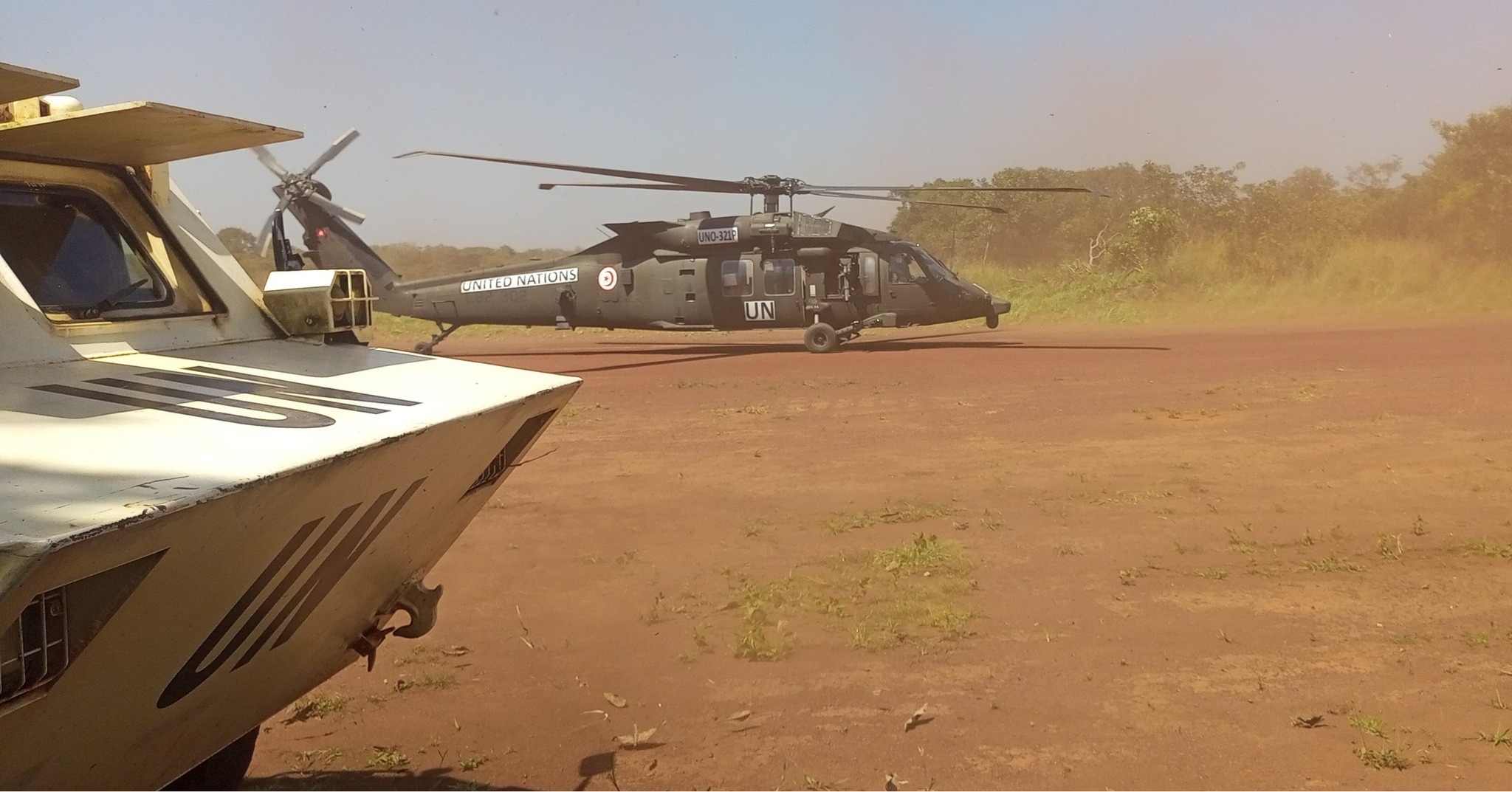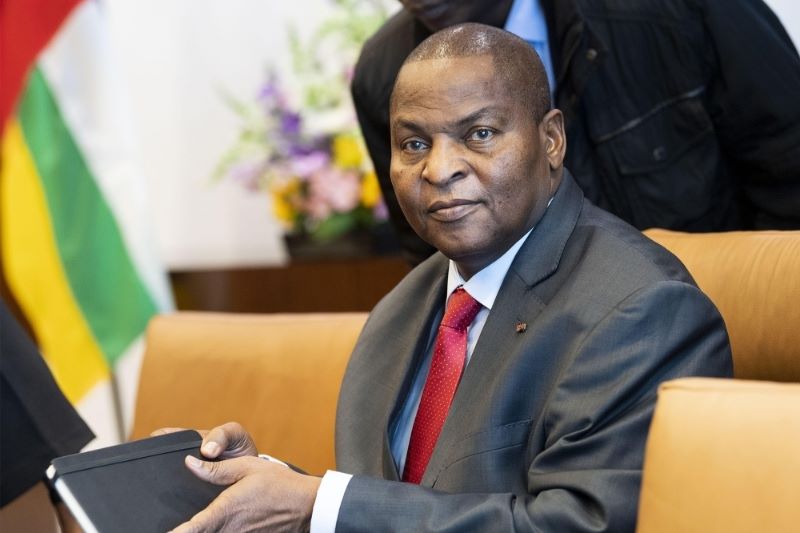New and rehabilitated infrastructure is boosting the ability to ensure civilian protection and local security.
The state of roads in the Central African Republic (CAR) remains a major challenge for the country’s development and stability. The national road network stretches over approximately 24,000 kilometers, of which only 3% is paved. Most roads are dirt tracks that become impassable during the eight-month rainy season, making many areas hard to reach. This severely hampers the movement of goods and people, complicates the implementation of the UN mission MINUSCA’s civilian protection mandate, and limits the expansion of state authority across the territory.
To address this, between 2022 and 2025, more than 120 metal and wooden bridges have been built or rehabilitated in locations including Bangui, Obo, Bambari, Bangassou, Berberati, Paoua, Kaga-Bandoro, Bouar, Ndélé, Bria, Birao, and Bossangoa. Six ferries have also been restored in places such as Bambari, Obo, and Berberati. The efforts also include 2.5 km of newly paved roads in Bangui and repairs to over 580 km of roads throughout the country.
Over $10.4 million (around 6 billion CFA francs) has been invested by MINUSCA over the past three years (2022–2025) in building and rehabilitating roads, bridges, and ferries across CAR.
These efforts help overcome logistical barriers to mobility within the country, while also enhancing the operational capacity of the Central African defense and security forces and MINUSCA peacekeepers. The improved infrastructure has strengthened their ability to carry out patrols and joint operations in high-risk zones, thereby reinforcing civilian protection.
Real impact on the ground
Beyond the figures and projects, it is local populations who are seeing the most tangible benefits.
In Gbakassa, in Lobaye prefecture, a long-neglected road has been upgraded thanks to joint efforts by local authorities, youth groups, and MINUSCA.
Like many other routes across the country, the road connecting Gbakassa to Bimon in the Bimbo municipality was in poor condition. At the initiative of local officials and with MINUSCA’s financial and logistical backing, young people from Bimon undertook road improvement work — much to the relief of local users.
Hugues Stanislas Bollo, a resident of Bimon, sees clear benefits. “This will really help our compatriots in Gbakassa. It’s an agricultural zone that supplies Bangui, so access is essential,” he noted.
About 20 young people and community members were mobilized for the project, split into four teams handling brush clearing, earthworks, backfilling, and drainage installation to prevent erosion.
Roadworks restoring hope and connection
Other regions, such as Haut-Mbomou, are also being transformed through road rehabilitation. In Haut-Mbomou, MINUSCA is currently restoring the Obo–Bambouti road, previously impassable. The work, still underway, is being carried out by MINUSCA’s Pakistani engineering contingent with the support of 50 young people enrolled in the Mission’s Community Violence Reduction (CVR) program.
Local residents hope the efforts will bring lasting peace and security. Mbolinzapa Carine, from the village of Zara, expressed her wish to see the road fully restored to Bambouti. “Before, it was difficult to travel here. Fear was constant. Today, you can move freely,” she said.
Another villager added: “Previously, only armed groups used this road. But now, things have really changed. People travel freely — it shows that security is returning. If the work continues to Bambouti, I truly thank God.”
MINUSCA has also restored several bridges in Kémo and Ouham-Fafa prefectures. In July 2024, as part of the CVR program, the Mission rehabilitated four bridges on the Dekoa–Bouca road axis.
Jean Ernest Vincent Ngouyomba, village chief of Télé, said the repairs have reduced accidents on that route. “We no longer have to witness serious accidents here. I’m very happy with the bridge repairs — it’s a real relief,” he said.
Meeting local needs in Bouar and beyond
In Bouar, Nana-Mambéré prefecture, where heavy rains often damaged roads, local demands prompted targeted interventions. In July 2022, Bouar mayor Dieu Beni Massina requested MINUSCA’s help to rehabilitate critical road sections, emphasizing: “Without roads, there is no development.”
From July 2022 to July 2025, with the support of MINUSCA’s Peruvian engineering unit, at least seven road sections totaling over 50 kilometers were rehabilitated — to the great satisfaction of local authorities and residents.
“These upgraded roads allow Bouar residents to access city hall for administrative services and to move around safely,” said the mayor.
Judith Koïgbé, a resident, added: “The road upgrades have reduced accidents and made it easier to move goods and people.”
Justin Ngate, a motorcycle taxi driver for six years and member of the local drivers’ association, shared similar sentiments: “Before MINUSCA’s roadwork in Bouar, transporting patients was unthinkable — the roads would worsen their condition. We were constantly at risk, and our bikes wore out quickly. But today, thanks to MINUSCA, we travel with much greater safety and confidence,” he said with satisfaction.
Vital ferry restored in Kouango
In Ouaka prefecture, the rehabilitation of a ferry that had been out of service for months has reconnected Kouango sub-prefecture with the rest of the region. The ferry is a key transport link for an estimated 68,000 people. Its absence had paralyzed both mobility and local economic activity.
The Ouaka River cuts through Kouango, separating it from villages like Bombala, located 97 km from Bambari. Without the ferry, people relied on canoes, posing risks and limiting access.
Restoring the ferry was a pressing concern for both locals and authorities. For Deputy Mayor Dongba Thierry Martinien, the region’s economy depended on it. “We have coffee, cattle, peanuts — everything is in Kouango. But to move these products, the ferry needs to operate again,” he said.
Infrastructure for Connectivity and Development
The rehabilitation of these infrastructures contributes to improved accessibility, enhanced security, economic development, reduced transportation costs, greater trade between neighboring communities, and quicker access to administrative, healthcare, and educational services.
These projects do more than just ease transportation. They also deliver social and economic benefits for local communities. Through the Cash for Work model often used by MINUSCA, these efforts generate local employment and stimulate the local market for construction materials.






